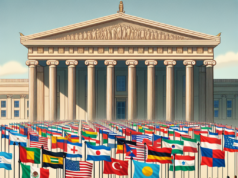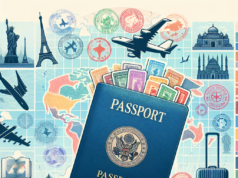The global refugee crisis has reached unprecedented levels, with millions of individuals fleeing conflict, persecution, and environmental disasters. As nations grapple with the complexities of resettlement, the urgency for effective solutions has never been more pressing. This article delves into the current state of the refugee crisis, the humanitarian need for resettlement, the barriers faced by refugees, successful practices, collaborative efforts, and future policy recommendations to ensure sustainable integration.
Understanding the Global Refugee Crisis: Current Statistics and Trends
As of 2023, the United Nations High Commissioner for Refugees (UNHCR) reports that over 26 million people are classified as refugees, with an additional 4.6 million seeking asylum. The ongoing conflicts in Syria, Afghanistan, and South Sudan, coupled with the impacts of climate change, have significantly contributed to this staggering figure. Trends indicate that the number of forcibly displaced individuals is likely to continue rising, with many countries experiencing an influx of refugees that strains local resources and infrastructure. The need for comprehensive data collection and analysis is critical to understanding the demographics and needs of these populations, which can inform more effective resettlement strategies.
The Humanitarian Imperative: Why Refugee Resettlement Matters Now More Than Ever
The humanitarian imperative for refugee resettlement is rooted in the fundamental rights of individuals to seek safety and security. Resettlement not only provides a lifeline for those fleeing violence and persecution but also fosters global stability and security. Countries that embrace resettlement can benefit from the diverse skills and perspectives that refugees bring, contributing to economic growth and cultural enrichment. In an era marked by rising nationalism and anti-immigrant sentiment, it is essential to reaffirm the moral obligation to protect the most vulnerable populations. The urgency of this matter is underscored by the increasing number of refugees facing dire conditions in overcrowded camps, where access to basic necessities is severely limited.
Barriers to Effective Resettlement: Challenges Faced by Refugees Worldwide
Despite the pressing need for resettlement, numerous barriers hinder effective integration for refugees. Legal obstacles, such as restrictive immigration policies and lengthy application processes, often leave refugees in limbo for years. Additionally, social barriers, including discrimination and xenophobia, can impede their ability to assimilate into host communities. Economic challenges, such as limited access to employment and education, further exacerbate the difficulties faced by refugees. Mental health issues stemming from trauma and displacement also pose significant challenges, highlighting the need for comprehensive support systems that address both immediate and long-term needs.
Best Practices in Refugee Resettlement: Lessons from Successful Programs
Successful refugee resettlement programs around the world offer valuable lessons in best practices. Countries like Canada and Germany have implemented community-based approaches that prioritize local engagement and support. These programs often involve partnerships with local organizations, which facilitate language training, job placement, and cultural orientation. Additionally, integrating refugees into existing social services can enhance their access to healthcare, education, and legal assistance. Evidence suggests that when refugees are empowered to contribute to their new communities, both the refugees and host societies benefit, fostering social cohesion and economic resilience.
The Role of Governments and NGOs: Collaborative Approaches to Resettlement
The collaboration between governments and non-governmental organizations (NGOs) is crucial for effective refugee resettlement. Governments can provide the necessary legal frameworks and funding, while NGOs often have the grassroots connections and expertise to implement programs that meet the specific needs of refugees. Joint initiatives can enhance resource allocation, streamline processes, and ensure that refugees receive comprehensive support. Furthermore, fostering partnerships with local businesses can create job opportunities for refugees, promoting economic independence and integration. A multi-stakeholder approach is essential to address the complexities of resettlement and to create sustainable solutions.
Future Directions: Policy Recommendations for Sustainable Refugee Integration
To ensure sustainable refugee integration, policymakers must adopt a holistic approach that addresses the multifaceted challenges faced by refugees. Recommendations include streamlining the resettlement process to reduce wait times, enhancing access to legal assistance, and promoting inclusive policies that combat discrimination. Investment in education and vocational training programs is vital to equip refugees with the skills needed to thrive in their new environments. Additionally, fostering community engagement initiatives can help build bridges between refugees and host communities, promoting mutual understanding and support. By prioritizing these strategies, governments and organizations can create a more effective and compassionate resettlement framework that benefits all parties involved.
The urgent need for effective refugee resettlement is a pressing global challenge that requires immediate attention and action. By understanding the complexities of the crisis, recognizing the humanitarian imperative, addressing barriers, learning from successful practices, and fostering collaboration, we can pave the way for a more inclusive and sustainable future for refugees. As the world continues to confront the realities of displacement, it is imperative that we reaffirm our commitment to protecting the rights and dignity of those seeking refuge, ensuring that they are not only welcomed but also empowered to contribute to their new communities.




























